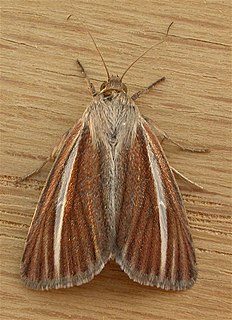
Heliocheilus cramboides is a moth of the family Noctuidae. It is found in Victoria, Western Australia, the Australian Capital Territory, New South Wales, the Northern Territory, Queensland and South Australia.
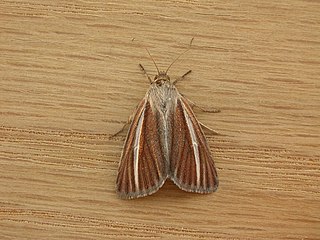
Heliocheilus is a genus of moths of the family Noctuidae. Former synonyms include Canthylidia.

Heliocheilus aleurota is a moth in the family Noctuidae. It is found in New South Wales, the Northern Territory, Queensland, South Australia, Victoria and Western Australia.

Heliocheilus canusina is a moth in the family Noctuidae. It is endemic to the Northern Territory, Queensland and Western Australia.

Heliocheilus mesoleuca is a moth in the family Noctuidae first described by Oswald Bertram Lower in 1902. It is found in Australia in New South Wales, the Northern Territory, Queensland and South Australia.
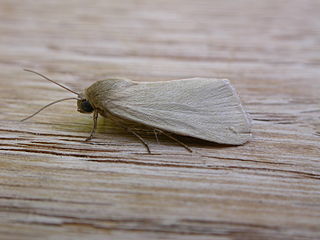
Heliocheilus moribunda is a moth in the family Noctuidae. It is found in the Australian Capital Territory, New South Wales, the Northern Territory, Queensland and Western Australia.

Heliocheilus pallida is a moth in the family Noctuidae. It is found in the Australian Capital Territory, New South Wales, the Northern Territory, Queensland, South Australia and Western Australia.
Heliocheilus albivenata is a moth in the family Noctuidae. It is endemic to Western Australia.
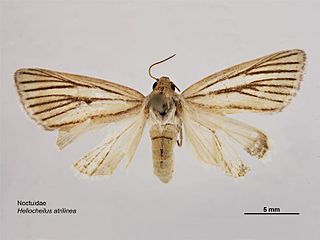
Heliocheilus atrilinea is a moth in the family Noctuidae. It is endemic to the Northern Territory, Queensland and Western Australia.
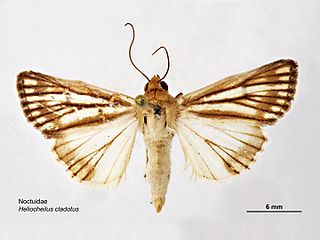
Heliocheilus cladotus is a moth in the family Noctuidae. It is endemic to New South Wales, the Northern Territory, Queensland, South Australia and Western Australia.
Heliocheilus ferruginosa is a moth in the family Noctuidae. It is endemic to the Northern Territory, Queensland and Western Australia.
Heliocheilus fumata is a moth in the family Noctuidae. It is endemic to Queensland.
Heliocheilus thelycritus is a moth in the family Noctuidae. It is endemic to the Northern Territory, Queensland and Western Australia.
Heliocheilus vulpinotatus is a moth in the family Noctuidae. It is endemic to the Australian Capital Territory, New South Wales and Queensland.
Heliocheilus rhodopolia is a moth in the family Noctuidae. It is endemic to New South Wales, the Northern Territory, Queensland and Western Australia.
Heliocheilus neurota is a moth in the family Noctuidae. It is endemic to New South Wales, the Northern Territory, Queensland and Western Australia.
Heliocheilus melibaphes is a moth in the family Noctuidae. It is endemic to the Northern Territory, Queensland and Western Australia.
Heliocheilus puncticulata is a moth in the family Noctuidae. It is endemic to the Northern Territory, Queensland and Western Australia.

The spotted straw moth is a moth in the family Noctuidae. It is found in North America, including Georgia.
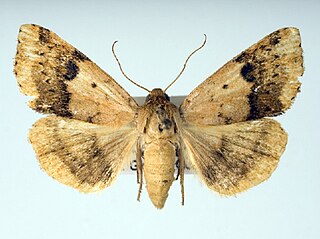
Heliocheilus lupatus, the purple topper, lupatus straw moth or spotted straw moth, is a moth in the family Noctuidae. The species was first described by Augustus Radcliffe Grote in 1875. It is found in the United States from Kentucky and central Connecticut south to Florida and Texas.






